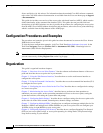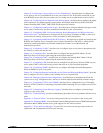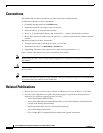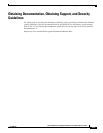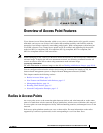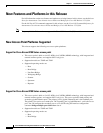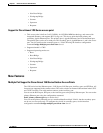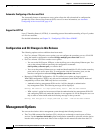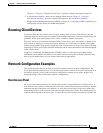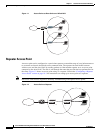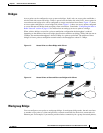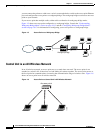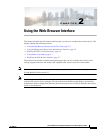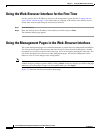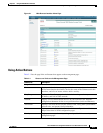
1-4
Cisco IOS Software Configuration Guide for Cisco Aironet Access Points
OL-30644-01
Chapter 1 Overview of Access Point Features
Management Options
Automatic Configuring of the Access Point
The Autoconfig feature of autonomous access points allows the AP to download its configuration,
periodically, from a Secure Copy Protocol (SCP) server. For more information, see Automatic
Configuring of the Access Point, page 4-34
Support for L2TPv3
Layer 2 Tunneling Protocol (L2TPv3), is a tunneling protocol that enables tunneling of Layer 2 packets
over IP core networks.
For detailed information, see Chapter 21, “Configuring L2TPv3 Over UDP/IP.”
Configuration and CLI Changes in this Release
The following updates and new additions have been made:
• For Cisco Aironet 2700 series access points, you can configure the secondary port to a VLAN ID
using the interface configuration command bridge multiple-port client-vlan vlan-id
• For Cisco Aironet 1550 series outdoor access points:
–
You can set the PoE-In port, SFP port, or the Auxiliary port as the primary Ethernet port. You
can set the primary Ethernet port using the configuration command:
dot11 primary-ethernet-port port-number-0to3
–
You can set the primary Ethernet port as a trunk and handle multiple VLANs, but the secondary
ports can be set as access ports only. To configure the vlan-id in secondary ports, use the
interface configuration command bridge multiple-port client-vlan vlan-id
• Removal of WPA/TKIP Configuration—Wi-Fi certified access points no longer support a
WPA/TKIP configuration. TKIP is only allowed in combination with WPA2/AES for backward
compatibility to allow older TKIP-only devices to associate.
–
Authentication key-management WPA version 1 will be changed to authentication
key-management WPA. The following message will be displayed:
Warning: WPA Version 1 no longer permitted by itself - WPA2 has been enabled
–
WPA version 1 option has been removed from the authentication key-management WPA CLI
and configuring TKIP only under this interface is not supported. It will be changed to aes-ccm
tkip to work on mixed mode with the following message on the ap console:
Warning: TKIP encryption no longer permitted by itself - AES-CCM has been enabled
Management Options
You can use the wireless device management system through the following interfaces:
• The Cisco IOS command-line interface (CLI), which you use through a console port or Telnet
session. Use the interface dot11radio global configuration command to place the wireless device
into the radio configuration mode. Most of the examples in this manual are taken from the CLI.



